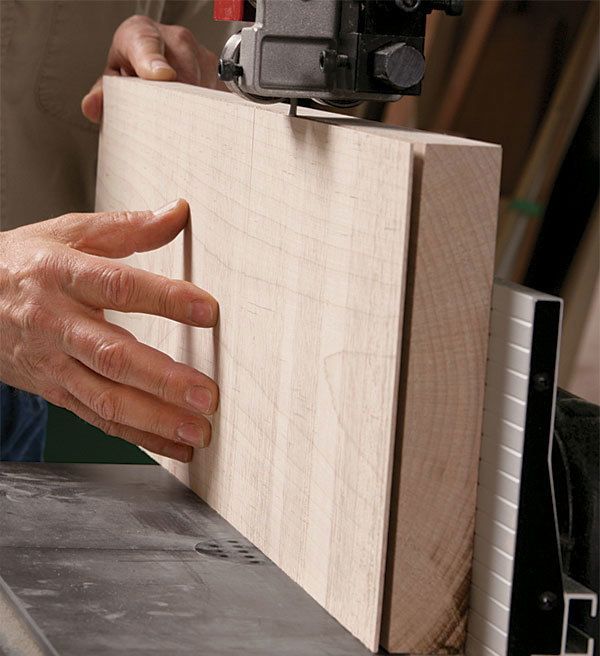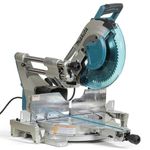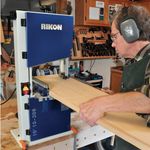Tool Test: Step Up to a Serious Bandsaw
A powerful, solid saw with big cutting capacity is more affordable than ever
Synopsis: Adding a riser block to a 14-in. bandsaw does add resaw capacity, but it doesn’t provide the additional power needed for big resaw cuts, and it doesn’t provide the hefty frame and the big table that help make these cuts successful. So we took a look at eight steel-frame bandsaws under $1,600 with at least 1-3/4 hp, and put them through a series of tests to judge their power, cutting ability, and build quality.
Models tested include: Grizzly GO514X2B, Grizzly GO513X2B, Jet JWBS 18QT, Rikon 10-345, Jet JWBS 18QT3, Shop Fox W1707, Laguna LT14 SUV, and Steel City 50250.
I’m sure you had great expectations when you added a riser block to your 14-in. bandsaw, but a riser block doesn’t provide additional power for big resaw cuts, or stiffen the saw’s frame, or help with an undersize table. Fortunately, I discovered several steel-frame bandsaws priced under $1,600 with 12 in. of resaw capacity while researching my new book on bandsaw techniques and maintenance (Taunton’s Complete Illustrated Guide to Bandsaws, on sale in November 2010).
With these new, bigger machines, you can realize your dreams of making big book-matches and large veneers. And once you have one, you’ll wonder how you ever got by without it. In fact, one of these extra-capacity machines will likely be the last bandsaw you’ll ever need.
Resawing 12 in. requires plenty of power, so we chose eight models with at least 13⁄4 hp. I put them through a series of tests to judge their power, cutting ability, and build quality.
Sturdy guide post equals a straight cut
The first thing I check when evaluating a bandsaw, particularly one with big resaw capacity, is the rigidity of the upper guide post. If the guide post flexes, the blade will twist and bind, resulting in a wandering cut. Other than a dull blade, this is the number one cause of bad bandsaw cuts.
To measure guide-post flex, I placed the guides 9 in. above the table to simulate an average resaw height. Then I applied 6 lb. of force to the blade and measured the deflection. While zero deflection is the goal, I’ve found that a sharp blade and a moderate feed rate can compensate for about 0.005 in. of flex.
Straight post is important, too—For good blade support, the upper guides should always be kept close to the workpiece. But if the upper guide post isn’t parallel to the blade, the guides will have to be readjusted every time the guide post moves up or down. So, after checking the guide posts for flex, I used a dial indicator to measure the position of the guides at the top and bottom of their adjustment, both front to back and side to side.
From Fine Woodworking #216
For the full article, download the PDF below:
Fine Woodworking Recommended Products

Makita LS1219L Miter Saw

Rikon 10-3061 10-in. Deluxe Bandsaw
The saw has two speeds: 3,280 sfpm (surface feet per minute) for wood and 1,515 sfpm for soft metals and some plastics.

Rockler Dust Right 1250 CFM






















Log in or create an account to post a comment.
Sign up Log in